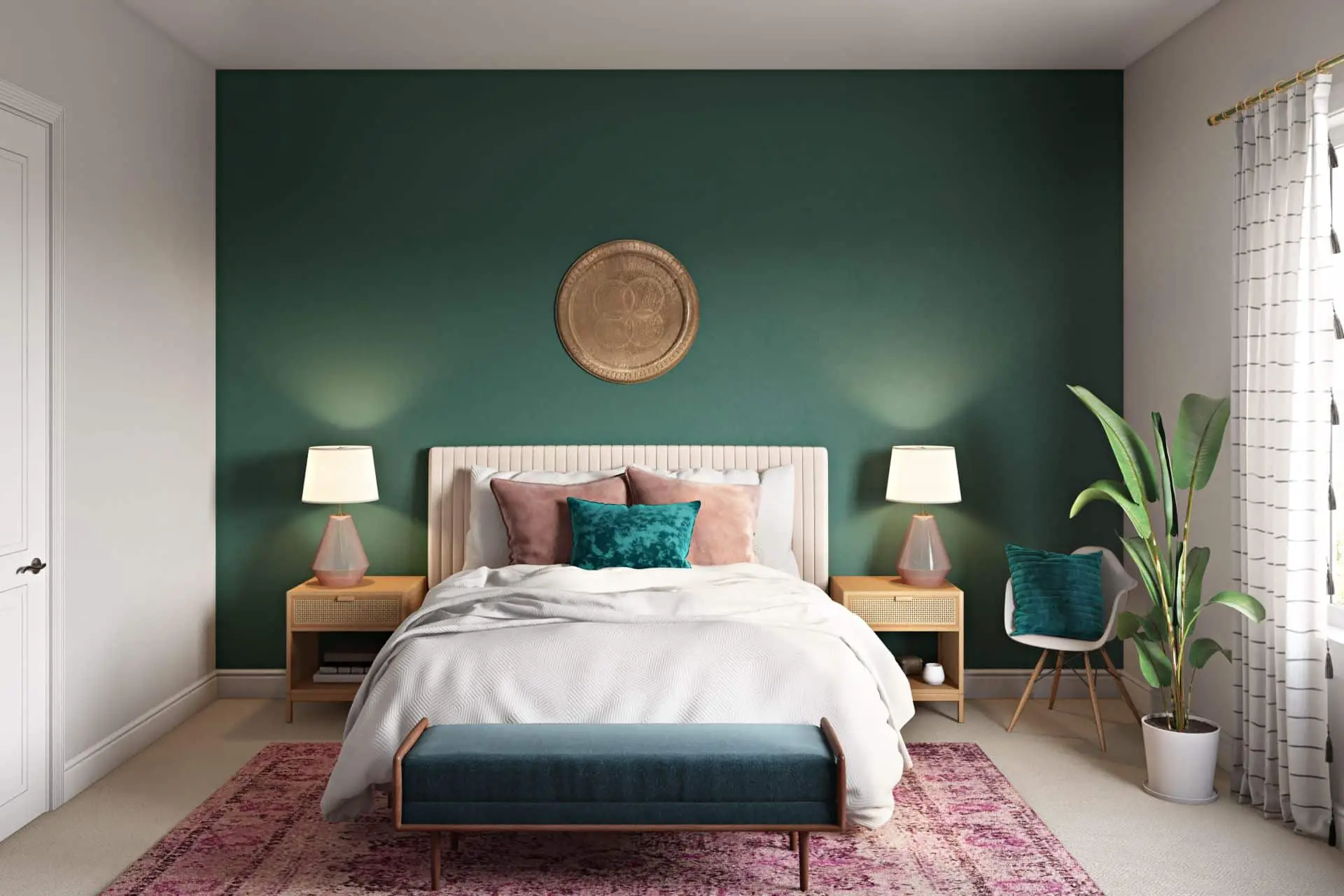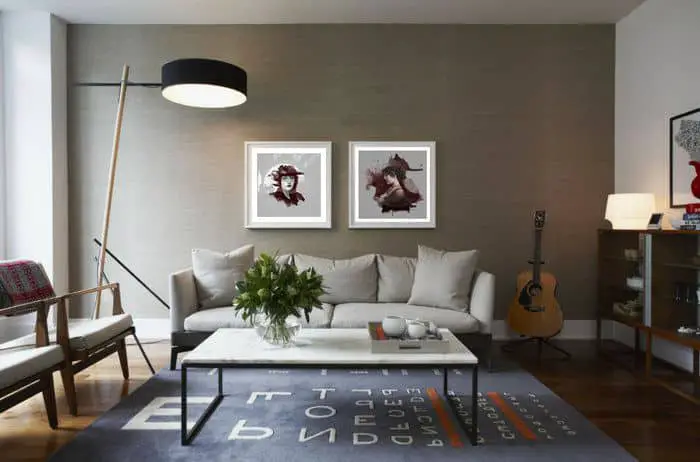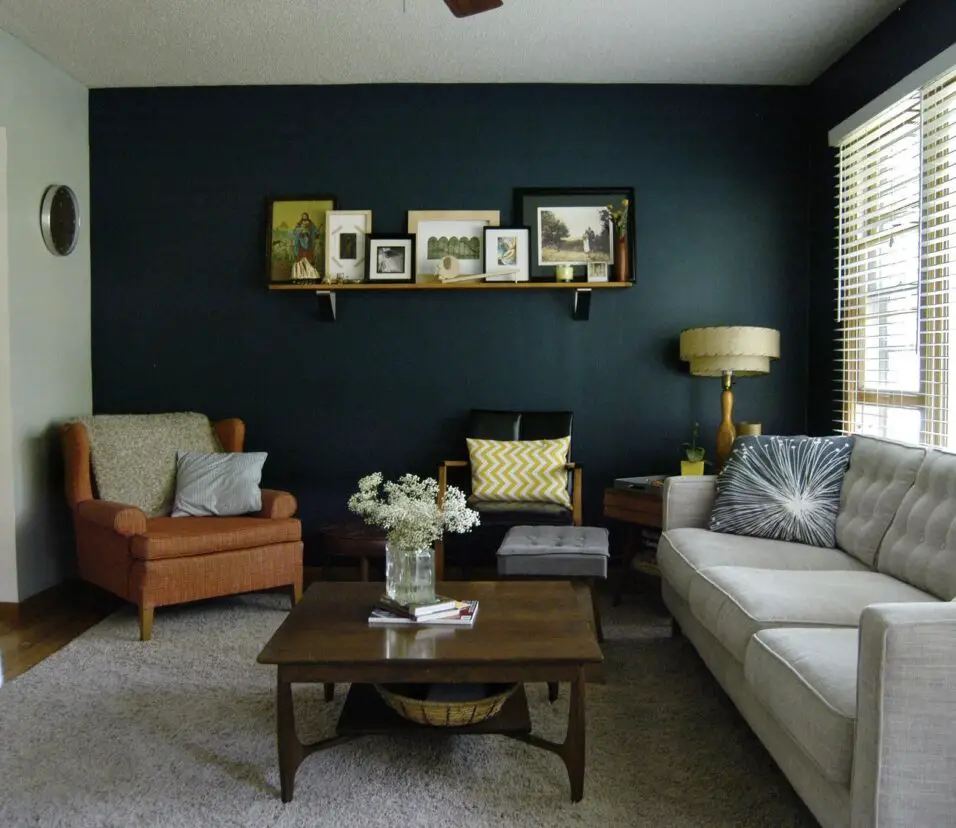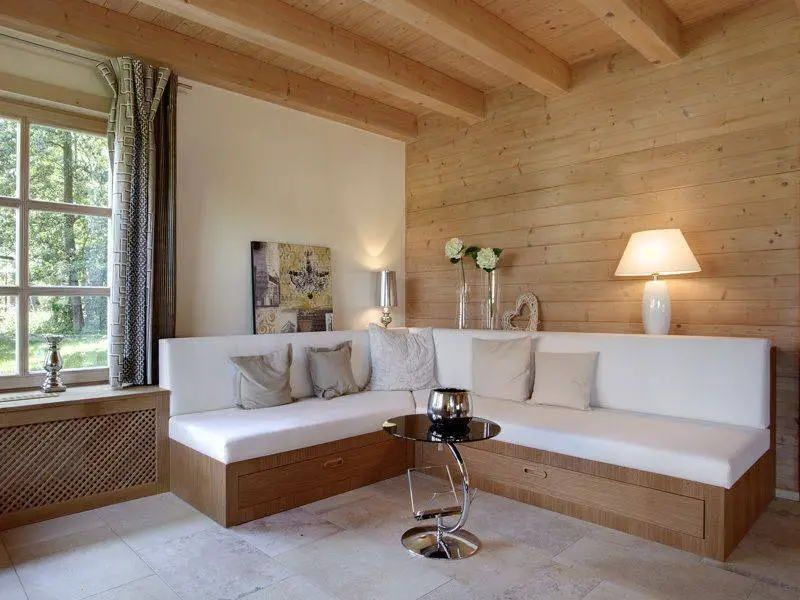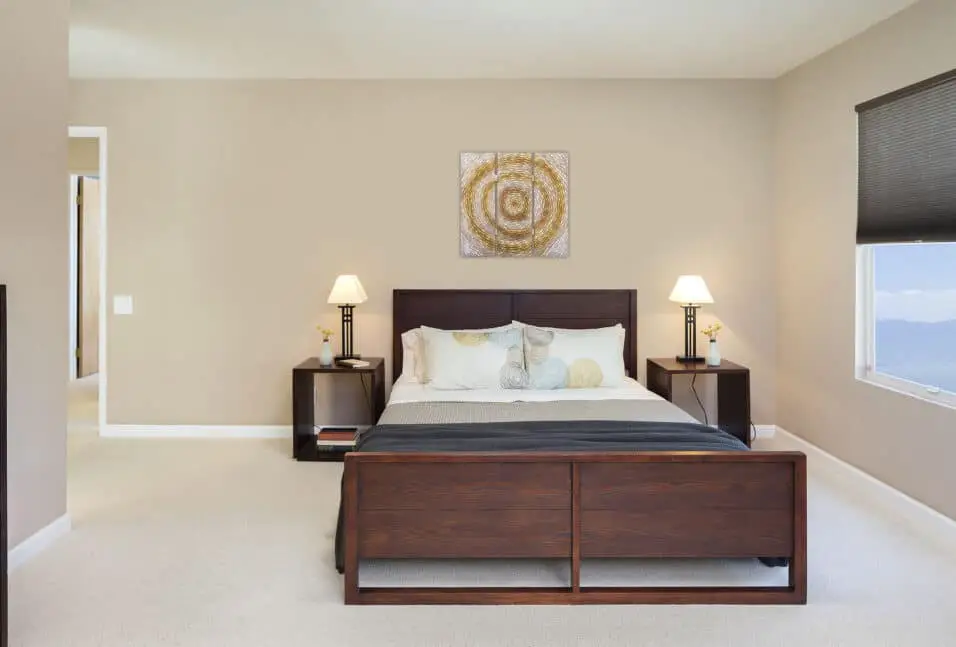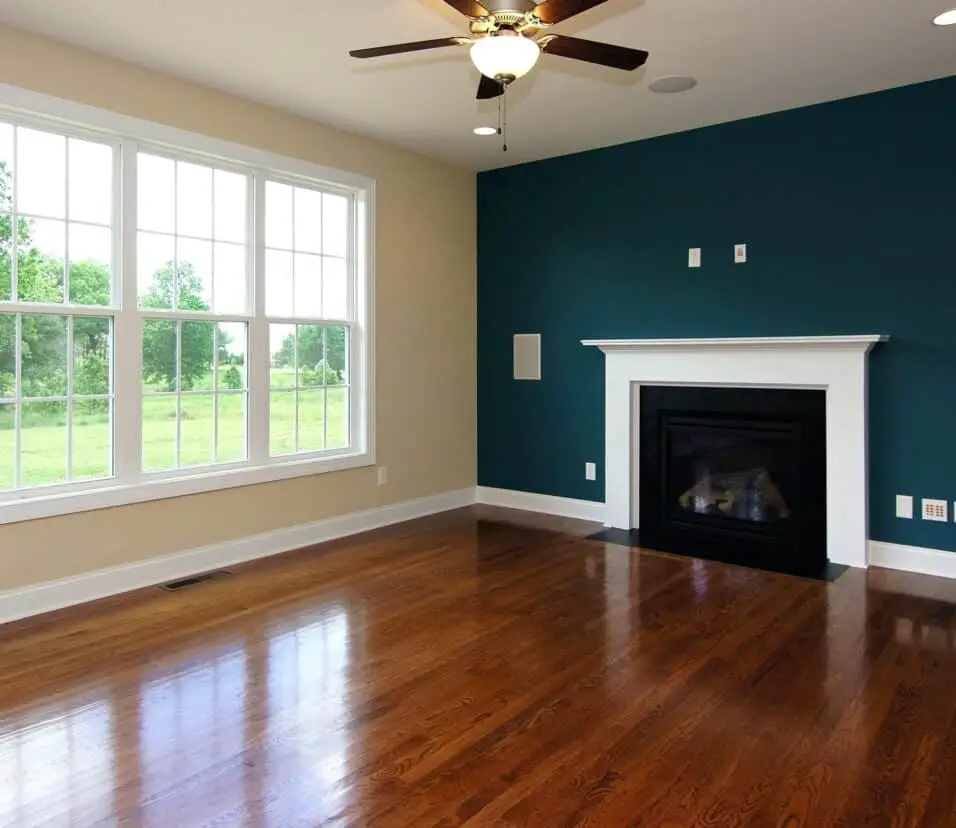What Is An Accent Wall
Introduction
What Is An Accent Wall: An accent wall is a popular interior design technique that involves painting or decorating one wall in a room differently from the others. It is a creative way to add visual interest, depth, and personality to a space. By highlighting a specific wall, an accent wall can create a focal point and enhance the overall aesthetic appeal of a room.
Accent walls can be created using various techniques and materials. The most common method is to paint the chosen wall in a different color or shade than the rest of the room. This contrasting color can be a bold and vibrant choice, such as a deep red or a bright blue, or a more subtle and understated option, like a soft pastel or a muted gray. The key is to select a color that complements the existing décor and enhances the overall ambiance of the room.
Another popular way to create an accent wall is by using wallpaper. This allows for a wide range of patterns, textures, and designs to be incorporated into the room. From geometric prints to floral motifs, the possibilities are endless. Wallpaper accent walls can add a touch of elegance, sophistication, or playfulness to any space, depending on the chosen design.
Accent walls can also be created using different materials, such as wood, stone, or brick. These textured accent walls can bring a rustic, industrial, or natural element to a room, depending on the material chosen. In addition to the aesthetic benefits, accent walls can also serve practical purposes.
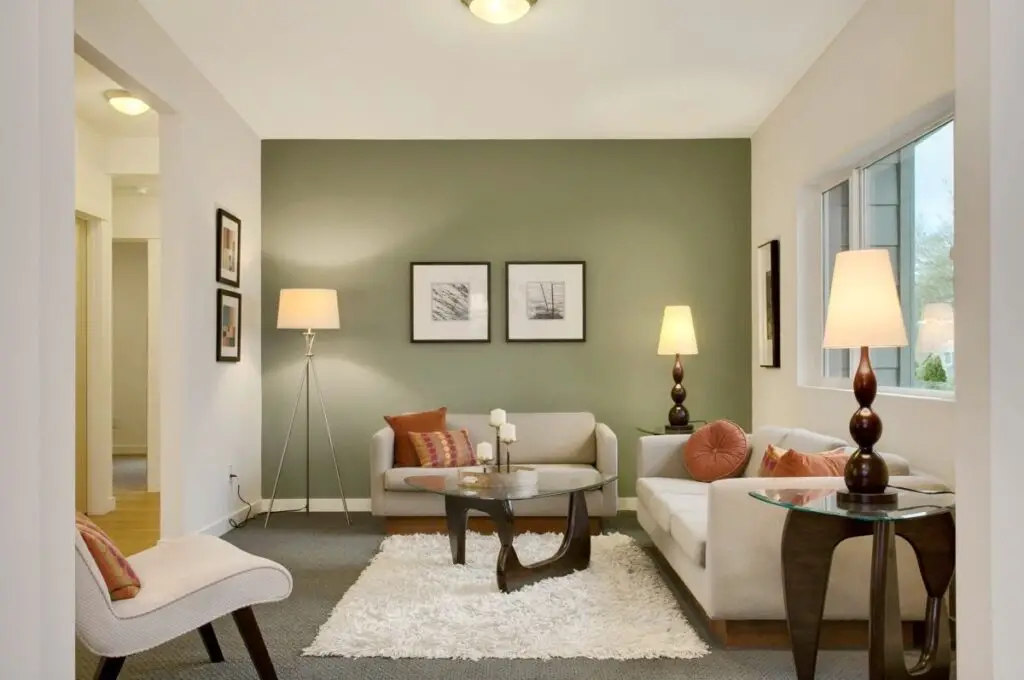
What is the point of an accent wall?
An accent wall draws attention to a neglected area or adds decorative flair to a room. Accent walls bring interest to your home’s design and can connect a color scheme together.
Painting or decorating one wall of a room differently is a common design idea called an accent wall. This focal point provides visual intrigue to the room. Accent walls provide depth, character, and elegance to a room. It can emphasize architectural elements, add drama, or give color or pattern to a bland environment.
To highlight a feature or region, accent walls are often used in room design. Changing the accent wall’s color or pattern makes it the room’s focal point. This works well in rooms with fireplaces, built-in shelves, or wide windows. A contrasting hue or pattern makes these features stand out in the space.
In addition to accentuating architectural details, an accent wall can set a mood or environment. In a bedroom or living area, navy blue or burgundy can create a pleasant, intimate sense. However, a bright color like yellow or orange may energize a playroom or home office.
Additionally, an accent wall allows you to experiment with different colors and patterns without dominating the room. An accent wall lets you employ bright colors or busy wallpaper without painting the whole wall. It lets you express your personality and add visual appeal without a major space renovation.
An accent wall creates a focal point, highlights architectural details, sets a tone, and lets you experiment with colors and patterns. An accent wall can make a room more visually appealing and engaging by painting, wallpapering, or adding other decorative features.
Where should you have an accent wall?
By the couch or behind
Wall decorations make rooms look better. Long, empty walls behind the entertainment center may cause the same problems. Accents or wall art will hide the TV and make the room look better.
Accent walls give a room personality and visual interest. It’s different from other walls because of its color, texture, or design. With the right accent wall, you can completely change the look of a room. Placing an accent wall depends on a lot of things.
Aim and Focus for the Room:
Before picking out an accent wall, think about what the room is used for. Accent walls should fit because rooms are used for different things. An accent wall could draw attention to a TV or fireplace in the living room. Behind the headboard might be a nice bedroom wall.
Features of the building:
When picking out an accent wall, you should think about how the room is built. An accent wall might look good in a room with columns, alcoves, or nooks. To bring the room together, pick a wall that goes with these features. Accent walls can be used to divide up open floor plans or draw attention to useful places.
Stroke and Color:
The result depends on what color accent wall you use. Calming colors are muted, and exciting colors are bold. Choose a color that goes with or stands out from the furniture and walls. The accent wall should stand out without being too much.
Your Style and Preference:
Where you put an accent wall depends on your personal taste. Style and personal taste should guide your choice of wall color. Your accent wall should show off your style, whether it’s bright and bold or simple and plain. You can make a choice by looking at different options and judging how nice the room looks.
When picking out an accent wall, think about the room’s purpose, its architecture, the colors you like, and your own unique style. Accent walls can change the look of a room and make it stand out. Adding accent walls to a living room, bedroom, or other room gives it depth, personality, and style.
What does an accent wall add to a room?
Accent walls are a terrific way to add color and pattern to your living room, regardless of your design. Walls offer depth and create a focal point, but they are also a cheap way to finish a living room. Accent walls help a room feel balanced and harmonious. An accent wall can unify a room by matching its color or pattern to the current decor. This helps identify regions and establish unity in open-concept spaces or multi-purpose rooms.
Accent walls are functional as well as decorative. An accent wall can hide architectural problems like uneven walls or exposed pipes in a room. You can hide deficiencies by strategically arranging the accent wall to bring the eye to a more appealing part of the room.
Additionally, an accent wall can showcase a room feature or object. To highlight a fireplace, artwork, or distinctive piece of furniture, an accent wall might be the perfect backdrop. By using a contrasting color or pattern, you can emphasize the highlighted part.
Any area can benefit from an accent wall’s depth, character, and visual appeal. An accent wall allows for infinite personalization and ingenuity to create a focal point, improve the look, or hide flaws. By carefully choosing color, texture, and arrangement, you can turn a simple room into a magnificent setting that matches your taste and enriches the atmosphere.
What is the meaning of accent wall design?
Features or accent walls are unusual interior walls. Accent walls may be a different color or substance from the surrounding walls.
Accent walls are used by interior designers to capture attention. This involves painting or decorating one wall a different color or design. This architectural element has become popular for increasing space aesthetics and creating a statement.
An accent wall emphasizes a fireplace, artwork, or architecture. Wall highlights give depth and dimension, making the area more appealing. Accent walls can separate an open floor plan into activity or function zones.
Consider the room’s style and color palette when choosing an accent wall color or pattern. A color or pattern that suits the environment and mood is desired. Bolder colors add drama, while neutrals add contrast.
Additionally, accent walls can be built using several ways and materials. Wallpaper, wood paneling, stone veneer, and textured finishes are alternatives to painting, which is most common. These materials add texture, depth, and visual appeal to the accent wall, improving space design.
A well-planned accent wall should enhance the room’s design rather than overpower it. Natural light, furnishings, and architecture should guide accent wall placement. By considering these elements, an accent wall may add personality and style to any area.
What is another name for an accent wall?
Interior walls that stand out are called features or accent walls. Accent walls could be made of different materials or colors.
Accent walls are used in modern home design to paint or decorate one wall differently. This method gives a place beauty, visual interest, and a focus point. Drawing attention to a wall can change the look of a place without much work.
An accent wall draws attention to a place or building. Photos, shelves, mirrors, and drawings can be put inside. Accent walls that aren’t all the same color, texture, or design add depth.
A focus wall is another name for an accent wall. Walls draw attention to a room. Focus walls could be made of wood, stone, brick, paint, or fabric. Make the wall stand out to match the style of the room.
Which wall to highlight relies on how the room is set up and how it looks. Accent walls are often put behind the bed, sofa, or table in bedrooms, living rooms, and eating rooms. This pattern looks good on fireplace walls and walls with lots of windows.
Accent walls can bring a room up to date without having to rebuild it. It lets people pick out colors, patterns, and textures. Accent walls that are bright or rough can make a room stand out and make an impact that lasts.
Accent walls give a room more depth. An interesting wall color, texture, or design makes the room more interesting. Add accent walls to a room to make it feel friendlier.
An feature wall can make a room look better. When you decorate your home, use a range of colors, shapes, and textures. Accent walls define dining and sitting areas, making them more useful and nice to look at.
How does an accent wall enhance the overall aesthetic of a room?
An accent wall is a powerful design element that can greatly enhance the overall aesthetic of a room. By creating a focal point, it adds visual interest and depth to an otherwise plain space. The use of bold colors, patterns, or textures on an accent wall can instantly transform the atmosphere of a room, making it more visually appealing and dynamic.
One of the key benefits of an accent wall is its ability to create a sense of balance and harmony in a room. By strategically placing the accent wall, it can help to visually anchor the space and bring together different elements of the room’s design. For example, if a room has a large window on one side, using an accent wall on the opposite side can help to create a sense of symmetry and balance.
Furthermore, an accent wall can also be used to highlight architectural features or specific areas of a room. For instance, if a room has a fireplace or a built-in bookshelf, painting or wallpapering the wall behind it as an accent wall can draw attention to these features and make them stand out. This not only adds visual interest but also adds depth and dimension to the room.
What are some popular materials used for creating accent walls?
When it comes to creating accent walls, there are several popular materials that can be used to add visual interest and texture to a room. One commonly used material is reclaimed wood, which adds a rustic and warm feel to any space. The natural variations in the wood grain and the aged appearance of reclaimed wood can create a unique and eye-catching accent wall.
Another popular material for accent walls is stone or brick. These materials can add a sense of elegance and sophistication to a room, especially when used in a fireplace or as a backdrop for a television. The texture and natural colors of stone or brick can create a striking focal point in a space.
Paint is also a versatile and cost-effective option for creating an accent wall. By choosing a bold or contrasting color, a painted accent wall can instantly transform a room and create a sense of drama. Additionally, wallpaper is another popular choice for accent walls, as it offers a wide range of patterns and designs to suit any style or theme.
Can an accent wall be used in any type of room or are there specific spaces where it works best?
An accent wall can be used in any type of room, but there are certain spaces where it works best to create a visually appealing and balanced design. One of the most common areas where accent walls are used is in living rooms or bedrooms. These rooms often serve as the focal point of a home, and an accent wall can help to enhance the overall aesthetic and create a sense of depth and dimension.
In addition to living rooms and bedrooms, accent walls can also be used effectively in dining rooms, home offices, and even bathrooms. These spaces can benefit from the added visual interest and can help to create a cohesive and stylish look. However, it is important to consider the size and layout of the room when choosing to incorporate an accent wall. In smaller spaces, it is best to opt for lighter colors or subtle patterns to avoid overwhelming the room.
Are there any specific design principles or guidelines to consider when choosing colors or patterns for an accent wall?
When it comes to choosing colors or patterns for an accent wall, there are indeed some design principles and guidelines that can help you make the right decision. The first thing to consider is the overall color scheme of the room. The accent wall should complement the existing colors and not clash with them. It is often recommended to choose a color that is already present in the room, but in a slightly different shade or intensity. This creates a cohesive and harmonious look.
Another important factor to consider is the size of the room. If the room is small, it is generally advised to choose lighter colors for the accent wall as they can make the space appear larger and more open. On the other hand, if the room is large, darker or bolder colors can be used to create a more intimate and cozy atmosphere.
When it comes to patterns, it is important to consider the scale and proportion. Large patterns can be overwhelming in a small room, while small patterns may get lost in a larger space. It is also important to consider the style of the room. For example, if the room has a modern or minimalist design, a simple and clean pattern may be more suitable, while a more intricate or bold pattern can work well in a room with a traditional or eclectic style.
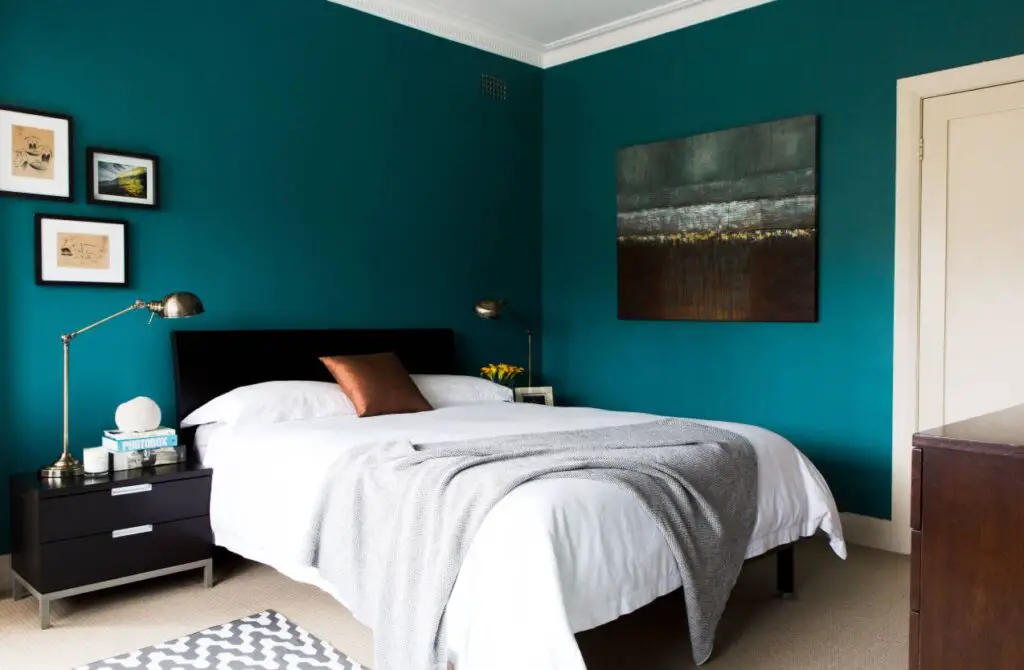
Conclusion
An accent wall is a popular interior design technique that involves painting or decorating one wall in a room differently from the others to create a focal point or add visual interest. It is a simple yet effective way to transform the look and feel of a space without making major changes. By strategically choosing a wall and applying a contrasting color, texture, or pattern, an accent wall can instantly enhance the overall aesthetic appeal of a room.
Furthermore, an accent wall idea can also serve as a way to showcase architectural features or unique elements within a room. For example, if a room has a fireplace, a large window, or an interesting architectural detail, painting or decorating the wall behind it as an accent wall can help draw attention to these features and make them stand out. It adds a layer of sophistication and elegance to the room, making it more visually appealing and memorable
An accent wall is a versatile and effective design technique that can transform the look and feel of a room. It brings depth, dimension, and visual interest to a space, while also highlighting architectural features and allowing for personal expression. Whether used in a living room, bedroom, or any other area of the home, an accent wall is a simple yet impactful way to enhance the overall aesthetic appeal and create a memorable space.



